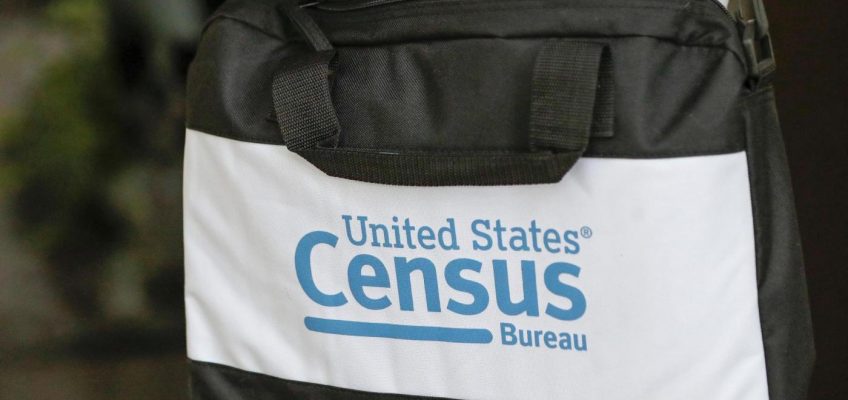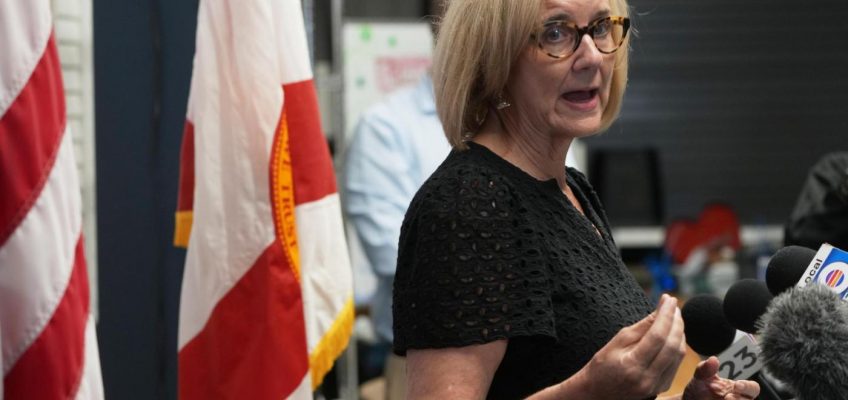By ADRIANA GOMEZ LICON
MIAMI (AP) — Democrat Eileen Higgins’ victory in the Miami mayoral race marks a setback for Republican President Donald Trump, who endorsed her rival and has touted his 2024 win in the area as a testament to his appeal in Florida and particularly among Hispanic voters.
FDA investigating possible adult deaths from COVID vaccines
Trump’s ‘gold card’ program goes live, offering US visas starting at $1 million per person
Trump administration adds militarized zone in California along southern US border
House passes defense bill to raise troop pay and overhaul weapons purchases
First of 30 oil lease sales planned for Gulf of Mexico draws $279 million in bids from companies
Higgins, who will become the city’s first female mayor, secured a decisive win of approximately 19 points over Trump’s pick, Emilio Gonzalez, signaling a potential shift in voter sentiment.
In becoming the first Democrat to lead the city of 487,000 in nearly 30 years, Higgins said she will explore legal ways to unwind an agreement between the city and the federal government that empowers police officers to conduct immigration enforcement.
“We need to look at all our legal options to ensure that our city police work for our neighborhoods and not on checking residents’ papers,” Higgins said in Spanish at a press conference Wednesday.
While harshly criticizing Trump’s immigration crackdown, Higgins has been more measured than her counterpart in New York City, Zohran Mamdani, in her approach.
Higgins’ message for Trump
Higgins’ victory occurred on the same night that Trump delivered a speech in Pennsylvania meant to emphasize his focus on combating inflation. But the president appeared dismissive on an issue that has damaged his popularity, saying inflation was no longer a problem and that Democrats were using the term “affordability” as a “hoax” to hurt his reputation.
The Associated Press asked Higgins after her win what she would tell Trump.
“When I hear what the residents have to say about affordability, it’s real. They’re facing expensive rent, expensive property insurance, costs of all sorts of things, especially even now the things they’re buying in the stores due to the tariffs,” she said. “I think every leader in America needs to think deeply about what they can do to help get the affordability crisis under control for the American people.”
At the press conference on Wednesday, Higgins, however said that sometimes she and Trump have been in agreement, praising the president for maintaining funding for a new local transit project.
Voters face ‘frustration’ and ‘fear’
Higgins, a former county commissioner, commented on a shift among voters she noticed compared to when she ran in previous years, when people wanted the government to be run more efficiently and to finish projects from housing to transportation.
Miami mayor-elect Eileen Higgins speaks to her staff before a news conference at her campaign headquarters Wednesday, Dec. 10, 2025, in Miami. (AP Photo/Marta Lavandier)
“This is the first election where when I speak to our residents, it’s not just about frustration, it’s also about fear,” Higgins said at the press briefing. “They’ve never been afraid of their government before. And now they are.”
Higgins said she heard from a medical clinic that had to immediately fire 27 employees who lost work authorization when the Trump administration stripped legal protections from more than 300,000 Venezuelan migrants.
“That’s 27 families without a breadwinner. And a health clinic that’s short 27 employees to take care of people,” she said. “We want a strong border, we want a path to citizenship. We don’t want law-abiding people to be ejected from our country, impoverishing their family and driving our economy into ruin.”
Turnout was high for a mayoral race
Both major national political parties took an interest in the race, which was a runoff between the two top finishers in the Nov. 4 general election. Trump talked up Gonzalez on his social media site, and national Democratic figures weighed in for Higgins.
Turnout in Tuesday’s runoff was huge for a mayoral election in Miami. At a little more than 37,000 votes, it nearly matched turnout in the Nov. 4 general election, which was 36% higher than the turnout four years ago.
However, the number of votes was still much lower than in a typical midterm election, like the one that will be held in 2026. For example, 92,500 voters in the city of Miami cast ballots in the 2022 election for governor.
Miami may become home of the Trump presidential library
Higgins could join the growing local opposition to Trump’s presidential library, which Republicans have pushed to build in downtown Miami. Earlier this month, the Miami-Dade College board voted to donate a nearly 3-acre undeveloped lot, valued at over $67 million, located on the iconic Biscayne Boulevard. However, a judge had temporarily blocked the transfer while a lawsuit plays out.
At a debate aired last month on Miami television station CBS 4, Higgins said that while it is “an honor” to be home to a presidential library, she felt this was a “land giveaway.” She said the state could have sold the land and paid for things that have been cut such as food aid and money for transit.
Miami mayor- elect Eileen Higgins speaks at her campaign headquarters Wednesday, Dec. 10, 2025, in Miami. (AP Photo/Marta Lavandier)
“We gave away very valuable land to a billionaire for free,” she said. “That doesn’t make any sense to me.”
Miami will host next year’s G20 summit
Earlier this year, Trump was accompanied by Miami Mayor Francis Suarez, who Higgins will succeed, at the White House in announcing Miami will host next year’s Group of 20 summit at his golf club in Doral, Florida, a suburb of greater Miami. He argued it was “the best location” for the international gathering.
Suarez said such gathering put the city “on the global map.”
Trump has been known for his public feuds with Democratic mayors and governors. The mayor of Washington, D.C., Muriel Bowser, had to confront a federal law enforcement intervention into her city launched by Trump. She announced last month that she would not seek reelection.
At the press conference, Higgins was asked if she was scared Trump could retaliate in any way against her.
“No tengo ningún miedo de él,” she said, Spanish for “I am not scared of him, at all.”
Associated Press journalist Stephen Ohlemacher in Washington contributed in this report.




